Looking for some open ended math activities for preschoolers? This playdough math invitation to play is just what you need. Read about how to take ordinary playdough and some loose parts and turn it into hours of mathematical thinking for your preschoolers.
Math Invitation to Play with Playdough and Loose Parts
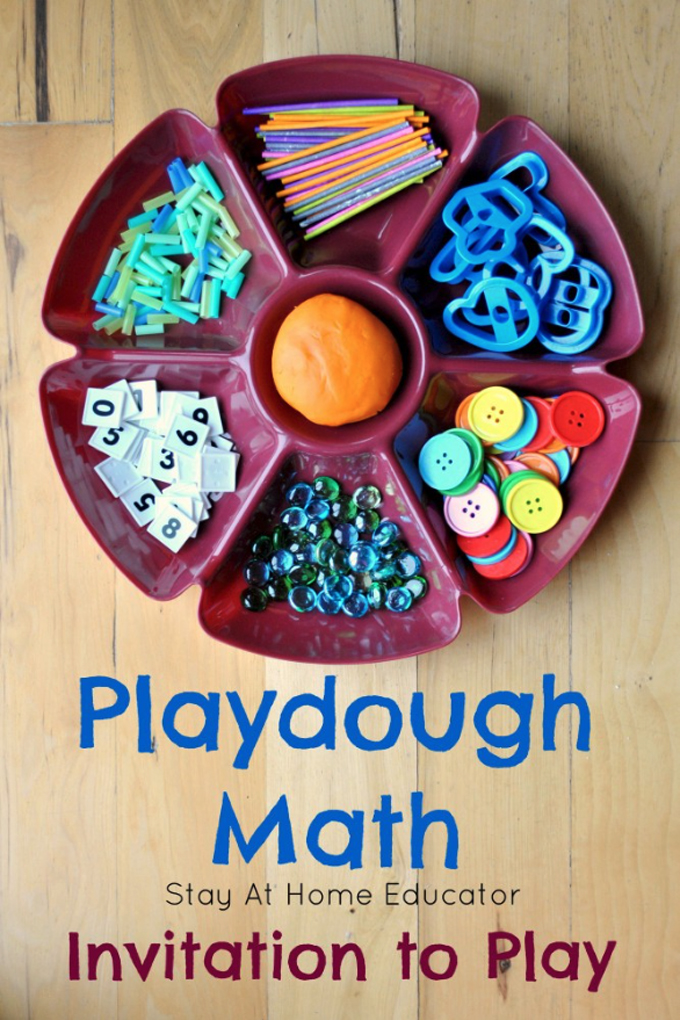
Math centers don’t always have to be a closed, self-checking activity. This playdough math invitation to play is very open ended and it keeps preschoolers busily learning many different math skills.
Sometimes the most valuable math center is a hunk of playdough, some rolling pins and lots of math related accessories. Not only did my preschoolers naturally use the playdough in a mathematical kind of way, this was also a great way for me to assess their skills in a natural, non-assessment kind of setting.
Invitations to play offer endless creativity and imagination for the preschoolers, while the preschool teachers can observe and mentally adjust future lesson plans.
-
Product on sale
 * Daily Lessons in Preschool Literacy CurriculumOriginal price was: $135.00.$99.00Current price is: $99.00.
* Daily Lessons in Preschool Literacy CurriculumOriginal price was: $135.00.$99.00Current price is: $99.00. -
Product on sale
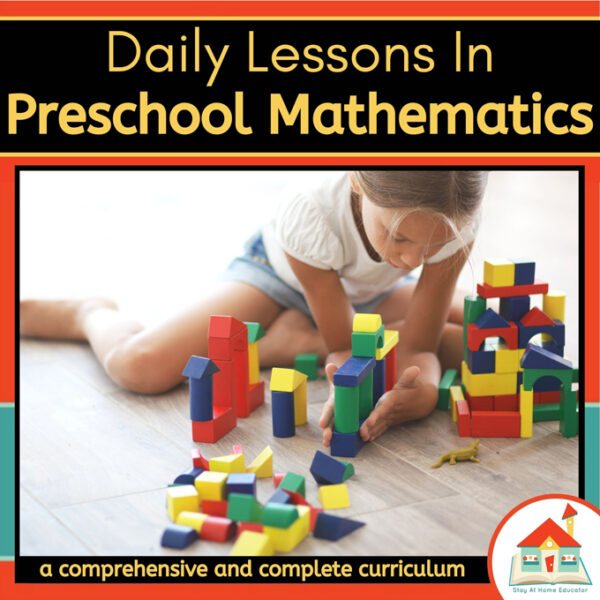 *** Daily Lessons in Preschool Mathematics CurriculumOriginal price was: $135.00.$99.00Current price is: $99.00.
*** Daily Lessons in Preschool Mathematics CurriculumOriginal price was: $135.00.$99.00Current price is: $99.00.
Related Reading
FAQ About Invitations to Play
An invitation to play is a way of setting up materials or toys for a play session and inviting your preschooler to manipulate and play with the items as desired. Children are allowed to play with the provided materials in the way they see fit, which might not be conventional.
There should be no rules in an invitation to play, with the exception of being kind, respectful, and safe.
An invitation to play should be open-ended, which means that they should not be designed for a specific outcome. Set up an invitation to play by taking the following steps:
1. Select a well-lit, comfortable space for the invitation to play.
2. Select a range of items, manipulatives, or loose parts.
3. Arrange them in a pleasing manner.
4. Invite your preschooler to come and play.
There are no rules with what an invitation to play should look or feel like, so there is a wide range of what kind of invitation to play that can be presented. Playdough invitations to play are always popular, as well as small water bins, and activities using natural or recycled materials.
How to Create a Playdough Math Invitation to Play
As with a lot of invitations to play, the materials needed to make it successful are endless, but in a good way! You don’t need to have exactly what I included in ours.
All you need are materials that are of interest to your preschoolers.
Materials
- playdough (You can find my favorite recipe here).
- counting accessories (see the list below)
Counting Accessories
You really can choose anything here. You can offer obvious counting materials, and some less obvious. Here are some ideas for what to include in a math invitation to play.
- number cookie cutters
- number tiles
- buttons
- straws
- floral rocks
- acrylic table scatter
- lollipop sticks
- plastic tasting spoons
- popsicle sticks
- counting manipulatives
Related Reading
The Set Up
You can choose to offer all the math accessories in individual containers, but I love making playdough centers using divided vegetable food trays. The idea is to organize the materials in a pleasing and inviting way.
Now, invite your preschooler to come and play.
-
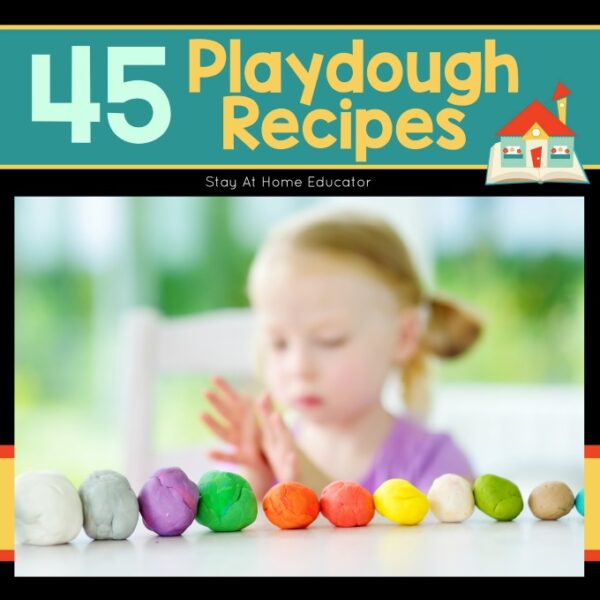 45 Playdough Recipes$10.00
45 Playdough Recipes$10.00 -
Product on sale
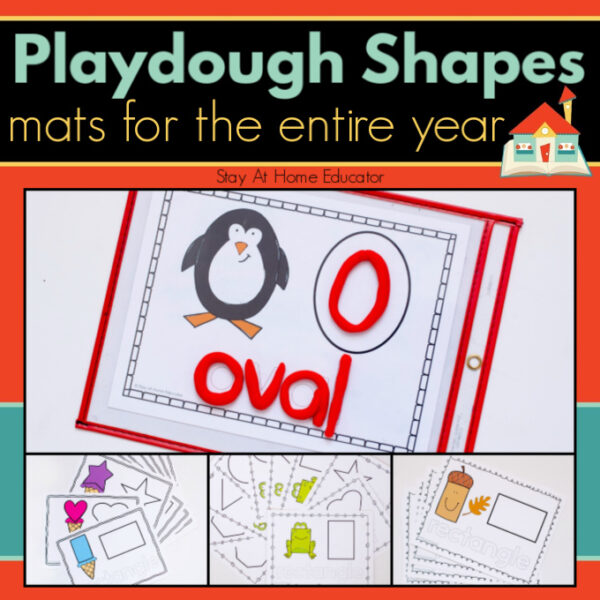 Playdough Shape Mats for the Entire YearOriginal price was: $12.00.$8.00Current price is: $8.00.
Playdough Shape Mats for the Entire YearOriginal price was: $12.00.$8.00Current price is: $8.00.
Playdough Math Invitation to Play Activity
My preschoolers quickly got to playing with the playdough.
Many of them began by rolling out their dough to form a patty. They began to add the math accessories to the playdough, counting and naming numbers as they went along. Some preschoolers began at the number one, and put one of each accessory into their playdough, counting all the way to ten.
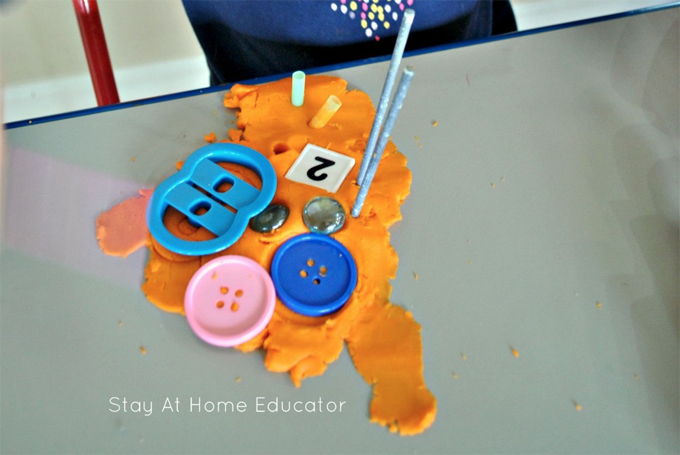
Other preschoolers used the materials to play pretend, still all the while counting, adding and subtracting. For example, one student used the number tiles to make a pathway to a castle, which was made out of straws and dyed lollipop sticks.
Another child discovered that the straws could be threaded onto the lollipop sticks, so she carefully counted how many straws could fit on each stick. The number differed as I intentionally did not cut the straws into equal lengths.
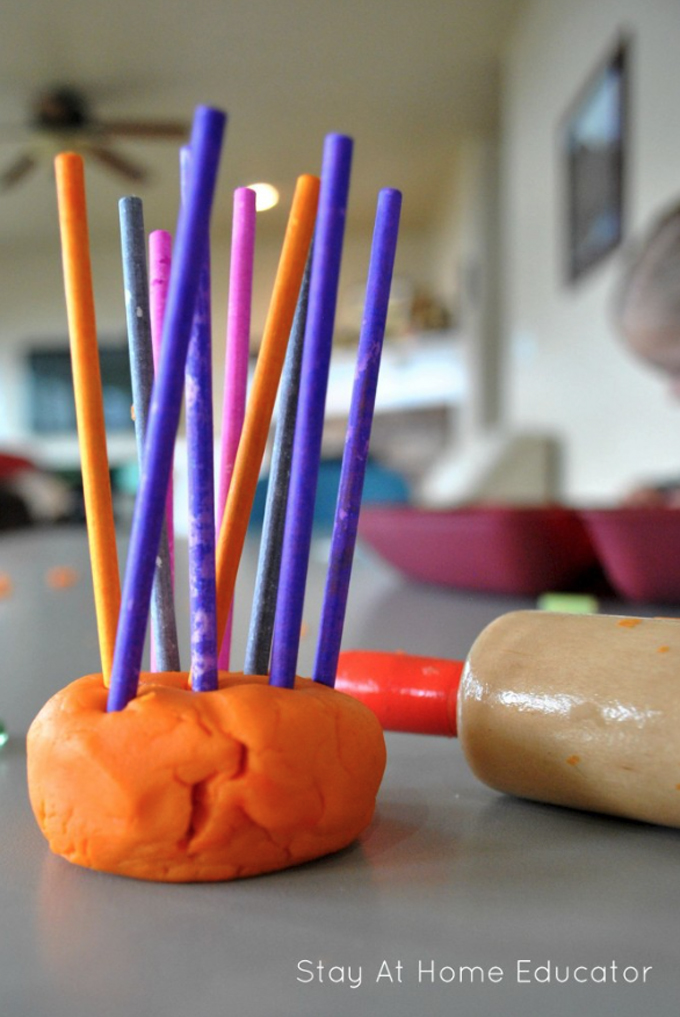
Birthday cakes were also made, as well as pancakes and cookies. The floral pebbles were used as chocolate chips, and as the children played I encouraged them to count the chocolate chips, or birthday candles, or stepping stones they added.
There was a limited supply of the materials, which in sharing meant that some children also practiced addition and subtraction skills. One preschooler needed four candles for her birthday cake, so when another shared his candles, he recounted to see how many he had left, which lead into talk about who had more or less.
As the children played, my role was to ask questions and encourage their play. For a time, I played along side them before taking notes that I would later use for assessments to present to their parents during parents-teacher conferences.
More Invitations to Play
Sometimes it’s the simple activities that have the greatest learning impact. Invitations to play also develop fine motor skills, while servicing the need for free play. They encourage children to learn through open ended questions, as well as counting and number recognition when offered the right materials.
Here are our most popular playdough invitations to play.
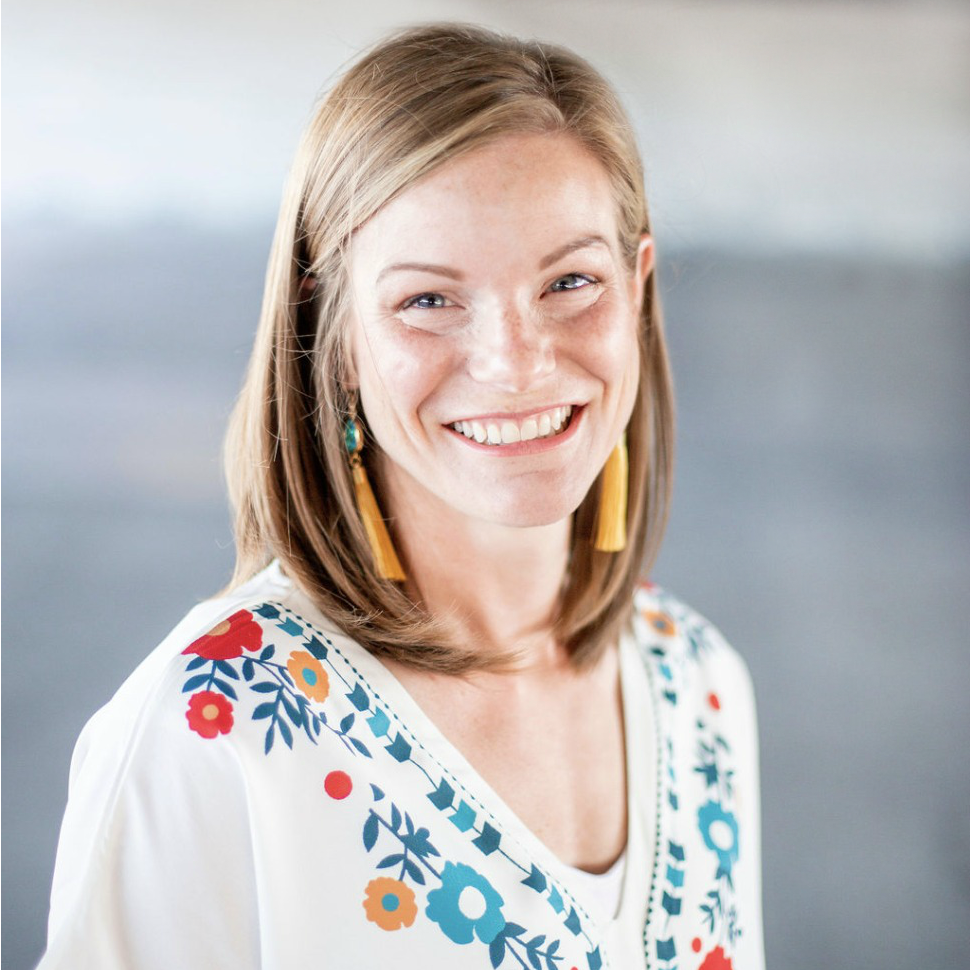
I’m Sarah, an educator turned stay-at-home-mama of five! I’m the owner and creator of Stay At Home Educator, a website about intentional teaching and purposeful learning in the early childhood years. I’ve taught a range of levels, from preschool to college and a little bit of everything in between. Right now my focus is teaching my children and running a preschool from my home. Credentials include: Bachelors in Art, Masters in Curriculum and Instruction.
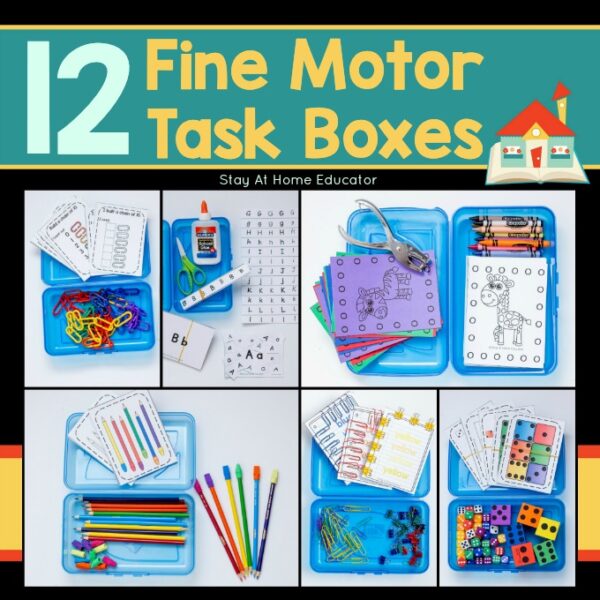
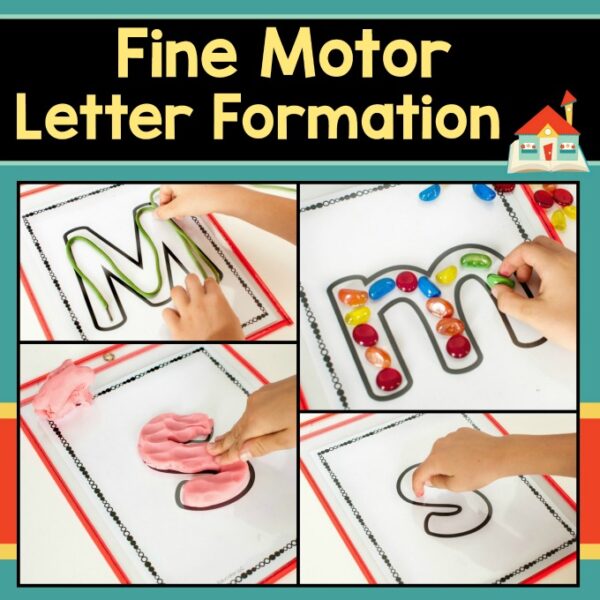

Thank you for your deeper translation of playing is working. Love your ideas.